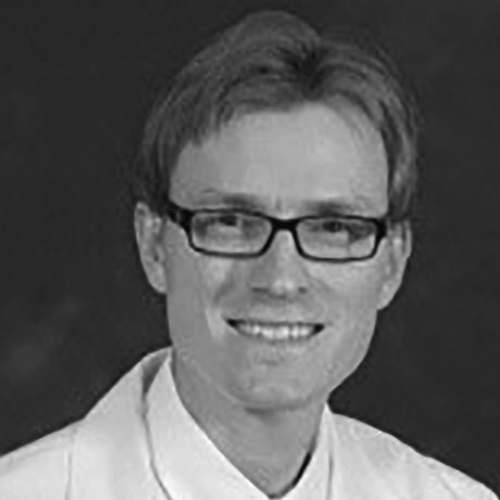Last month, “Grey’s Anatomy” debuted Dr. Lauren Riley, a deaf doctor who implements several true-to-life accommodations in her work. Lest anyone think Dr. Riley’s character is more fiction than fact, consider organizations such as the Association of Medical Professionals with Hearing Losses (AMPHL), whose members and followers number in the thousands.

Dr. Michael McKee
“Fortunately, times are changing due to the expanding array of assistive technologies and the support of the Americans with Disabilities Act,” states Dr. Michael McKee, a past president and current board member of AMPHL. “Organizations such as AMPHL highlight the impressive contributions of these healthcare providers in addressing the longstanding health inequities that patients with disabilities experience.”
AMPHL’s current board members share some of the hearing loss accommodations they’ve utilized from consultations to surgery to go about their workday.

Christopher Moreland, M.D., MPH
Internal Medicine Physician and Associate Professor of Medicine, AMPHL
“How do you listen to their hearts?”
That’s the most common question I get as a deaf physician and medical educator. To check my patients’ heart sounds, I connect my stethoscope’s cord to my cochlear implant processor, an approach already outdated. New stethoscopes can wirelessly send heart valve sounds to hearing aids or sound processors, eliminating the tethering cord. For the more visually inclined, some stethoscopes can transmit visual readouts of those sounds to smartphone apps. The rapidly growing number of doctors and other healthcare professionals with hearing loss will benefit from even more innovative approaches in the future. —

Alicia Booth, B.A., B.S., NIC
Designated Sign Language Interpreter, Founder of Designated Interpreters LLC
It was my first time seeing a human heart, this one being resuscitated outside of a 28-year-old trauma patient. The trauma surgeon instructed the deaf medical student to stop the bleeding, which is where my work as a designated sign language interpreter (DI) got interesting. DIs dive into new territory, create signs for medical terminology and adapt the interpreter’s role for more dynamic outcomes. Being a DI means knowing when to challenge traditional interpreting methodologies, when to team up with medical captioners, and when to utilize emerging adaptive technologies to ensure full communication access for deaf professionals.

Jaime A.B. Wilson, Ph.D., ABN
Board-certified Neuropsychologist and Immediate Past President of AMPHL
“I have floaters and vertical streaks in my right eye,” my patient stated.
These verbalized words streamed across my smartphone app as text. As a neuropsychologist with a profound hearing loss, I rely on speech-to-text apps such as Ava or App MyEar when working with patients who do not use ASL. The patient — who turned out to have a chronic subdural hematoma — was mostly oblivious to my use of the app. Speech-to-text apps provide a discreet and reliable way of accessing verbal information that a hearing loss might otherwise prevent.
Learn more about adapting and using other available accommodations for hearing loss at the Association of Medical Professionals with Hearing Losses website: www.amphl.org.

